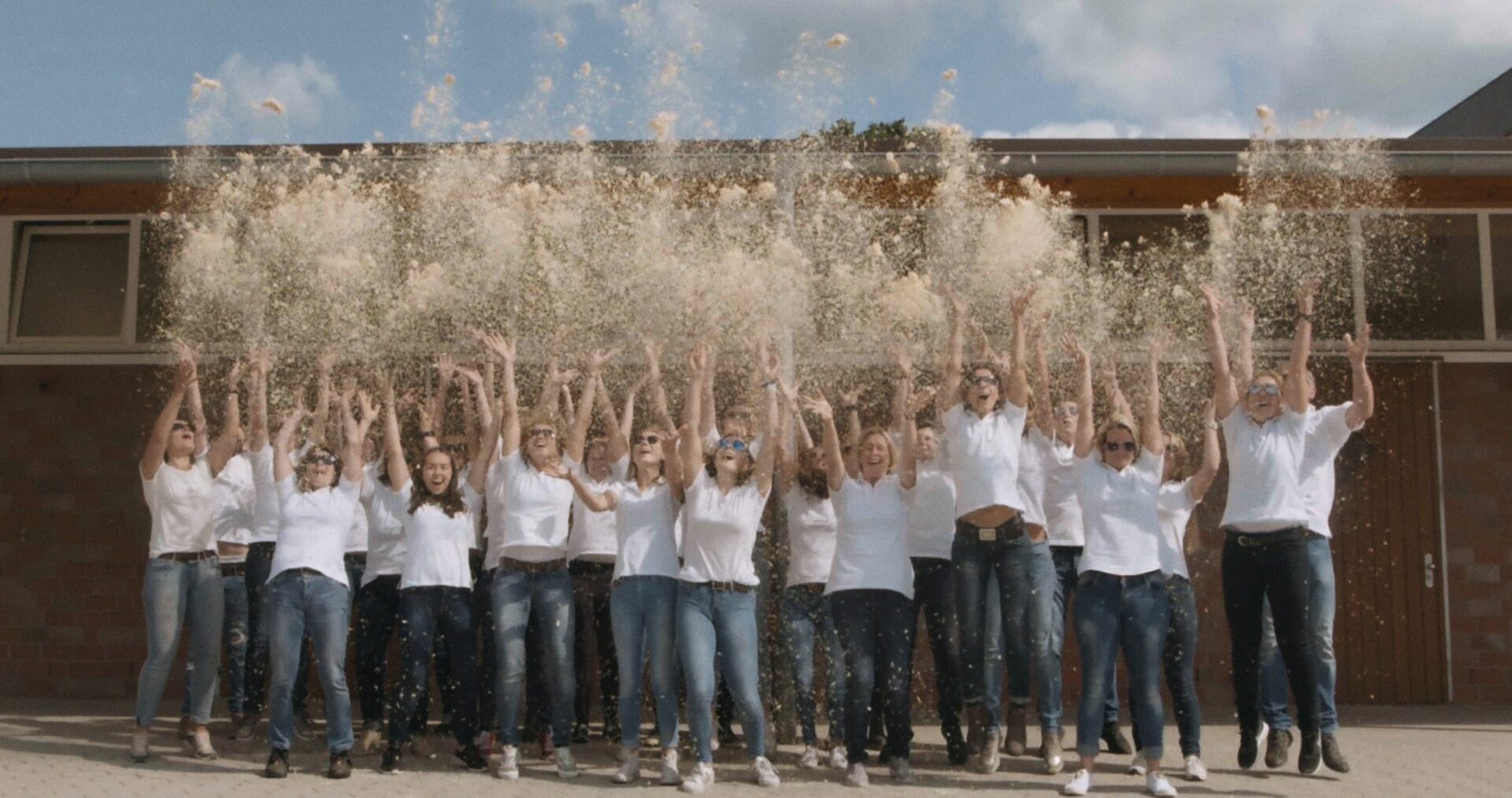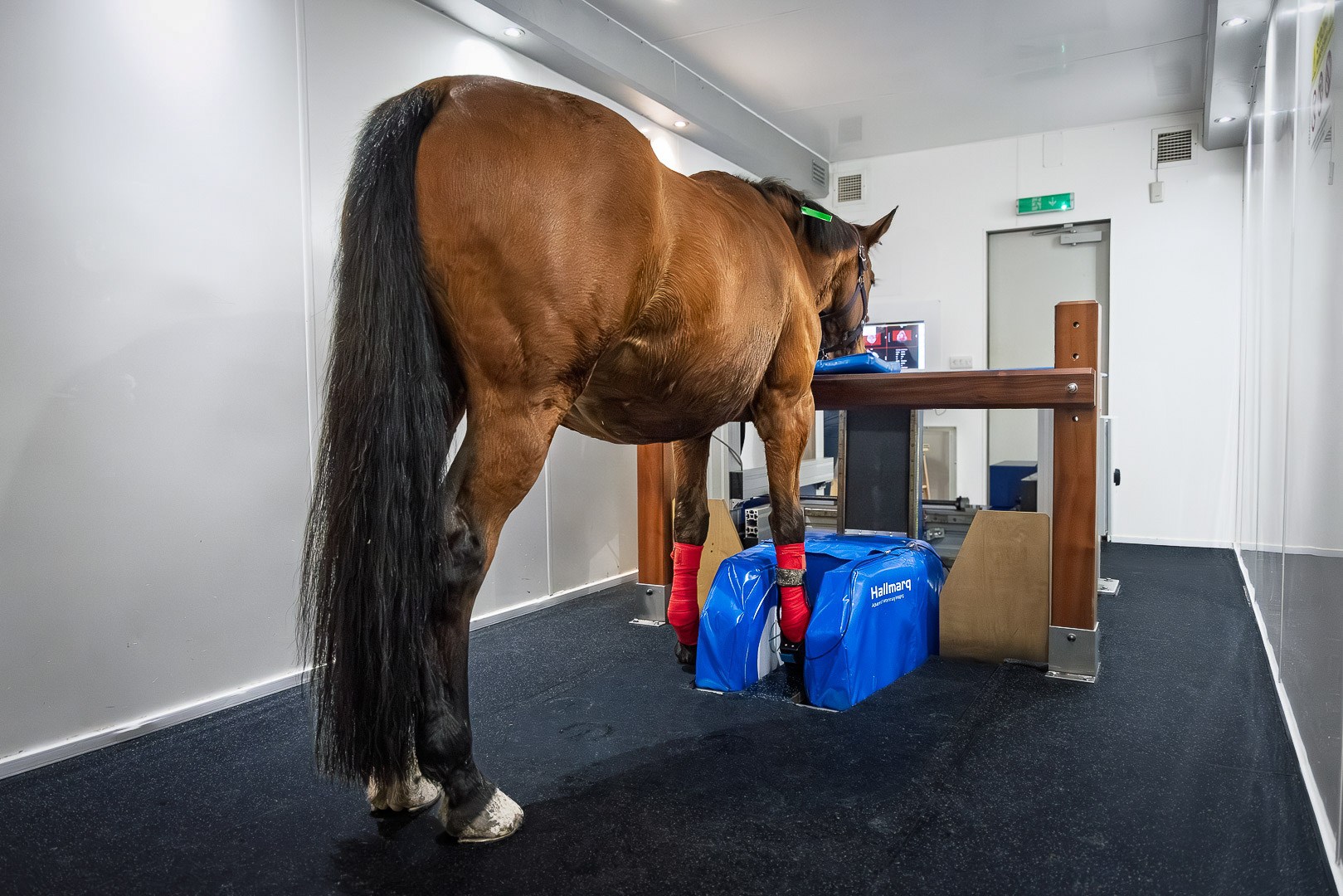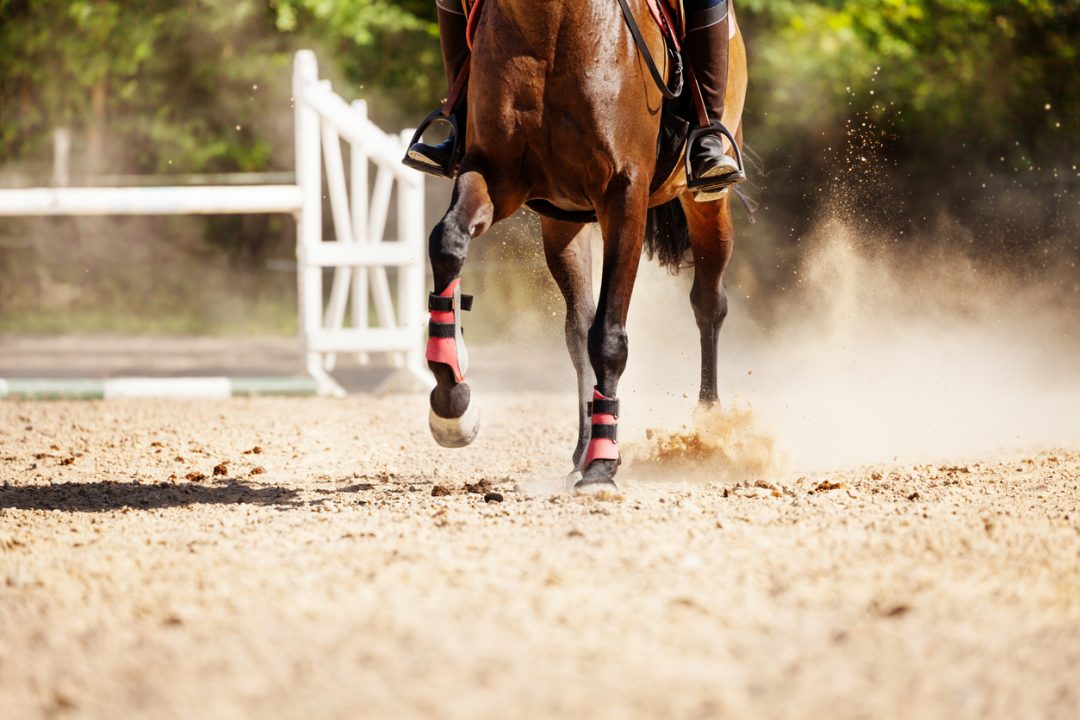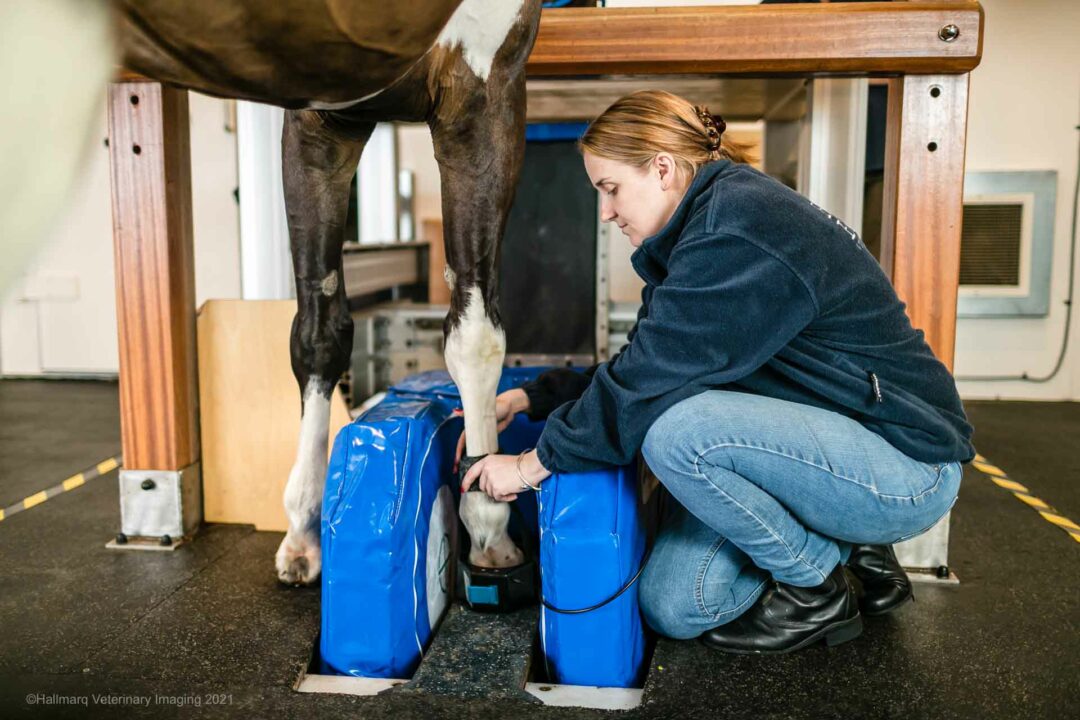Pferdeklinik Bargteheide, is celebrating 30 years of equine veterinary practice and 20 years since they installed a Hallmarq Standing Equine MRI. We look back – with some nostalgia – at those early days.
Ahead of the Curve
Hallmarq’s second Standing Equine MRI site came to us through an inquiry from the clinic’s owner, Werner Jahn, at the AAEP conference in 2002. As practice owner and an early adopter, Werner is very much a person who seeks new and exciting things. He was hugely supportive of this new technology and well ahead of the curve in offering advanced equine imaging at that time.
Model Magnet
System installation took place in 2003 but wasn’t without its problems. Unable to supply and fit the magnet in time for the clinic’s grand opening, Hallmarq’s Founder Director, Nick Bolas, and team found a novel workaround.
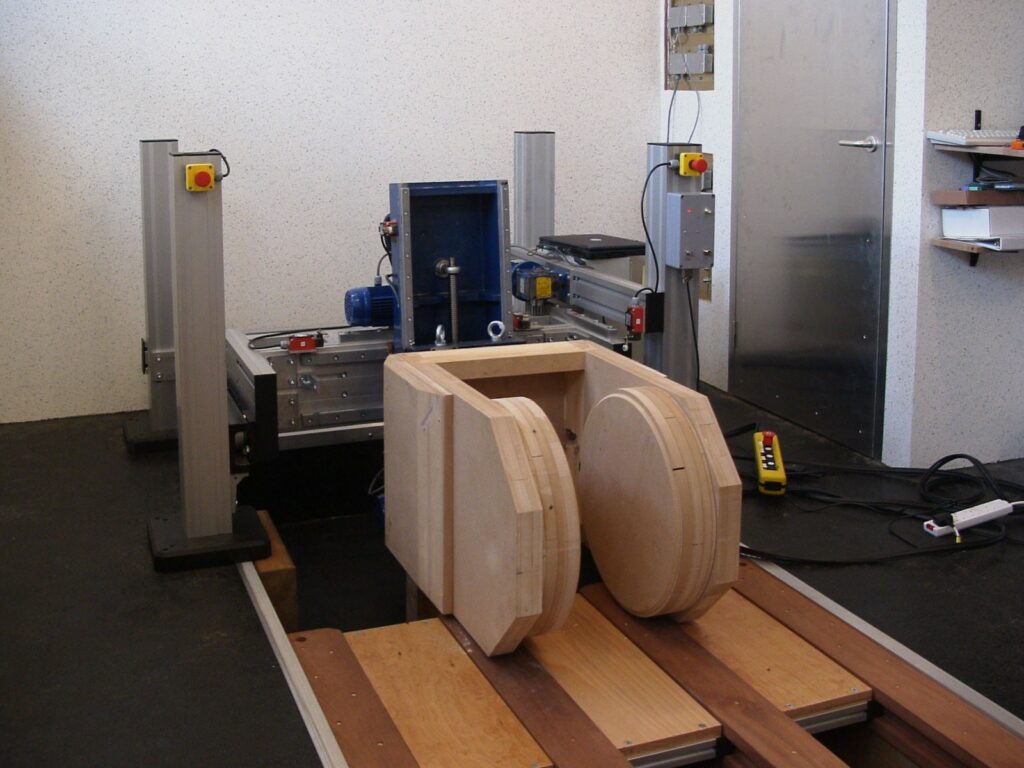
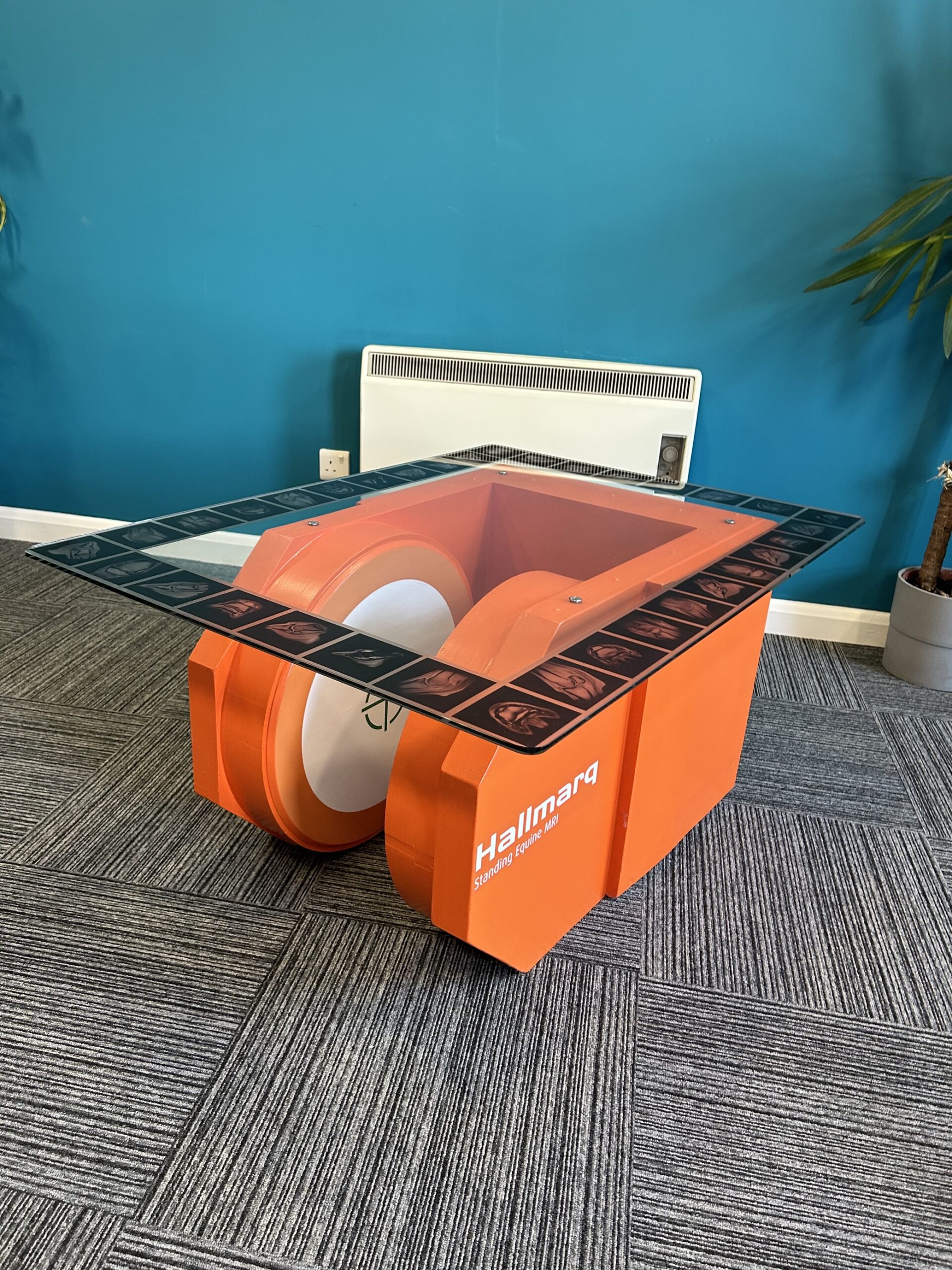
Always Innovative
Delivery of the live magnet followed soon after, but the challenges continued. Originally designed for a CT system, the room in which the MRI was installed contained a pit that was reinforced with steel. For MRI, the steel reinforcement is not needed but to dig out the steel in the pit would have cost thousands. It was far easier to change the magnet than the room! A workaround was found and hours were spent attaching small steel plates to the side of the magnet to increase its thickness and prevent the magnetic field from leaking.
Music Maestro!
At that stage, the practice became Nick’s second home as weeks were spent camping out in the residents’ room above the clinic. Endless test scans took place to fine-tune the magnet and ensure that the clinical images obtained were of the quality needed for diagnosis. Alongside Werner, practice partner Ina Lorenz was absolutely determined to make a go of MRI and put in a huge amount of effort. Nick’s lasting memory is of trying to complete the scan process before Dido’s CD came to an end; the soundtrack became their benchmark for maximum scan time! It’s no surprise that many Hallmarq customers today play music in the MRI room to relax the horse throughout the process and perhaps give the operators a deadline for completion – dependent on the artist of course!
The Gold Standard in Lameness Diagnosis
October 2003 eventually saw the first seven live scans take place. Since those early days of challenge and collaboration, Pferdeklinik Bargteheide has performed an astonishing 6,634 standing equine MRI scans on horses that are ridden either for leisure or competition. When the system was first installed, the practice typically saw a large number of deep digital flexor tendon (DDFT) injuries. Although less common nowadays, mainly due to awareness, education, and the use of MRI as the gold standard in diagnosis, the injury is the most common site of damage in the foot identified by standing MRI scanning of sport horses.
The Journey Continues
The practice has grown from 25 staff to 70 with MRI forming part of a much larger diagnostics suite and the clinic’s original footprint expanded hugely. Pferdeklinik Bargteheide continues to be a pioneer in new technology, adopting the latest solutions for improved horse health and we are proud to be part of that journey.
From us all at Hallmarq, Happy Birthday Bargteheide!
INTERESTED IN VISIONARY VETERINARY IMAGING?
